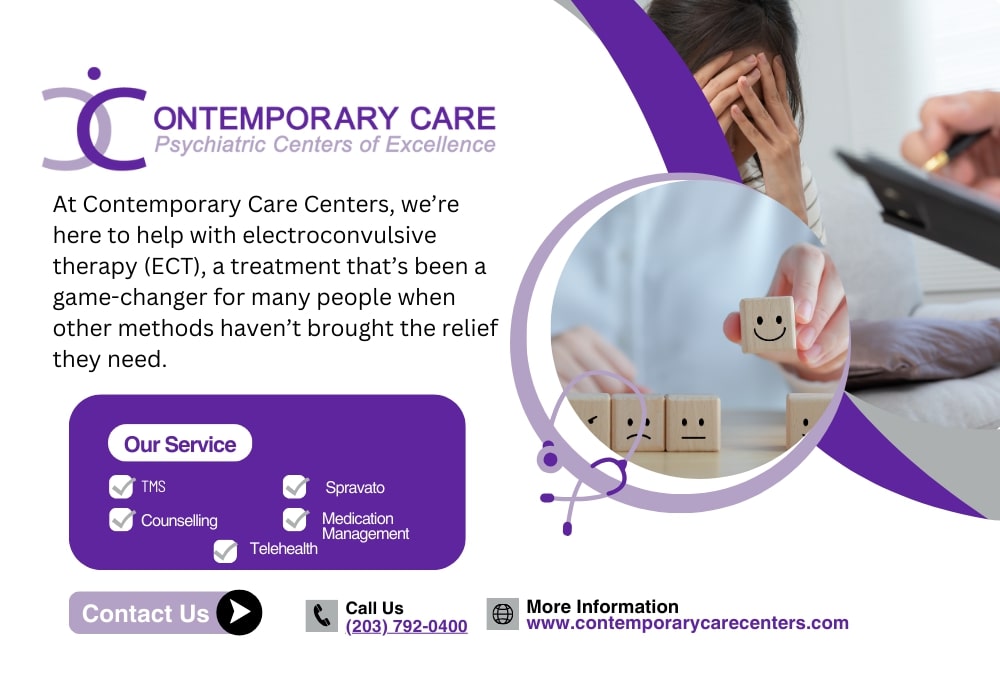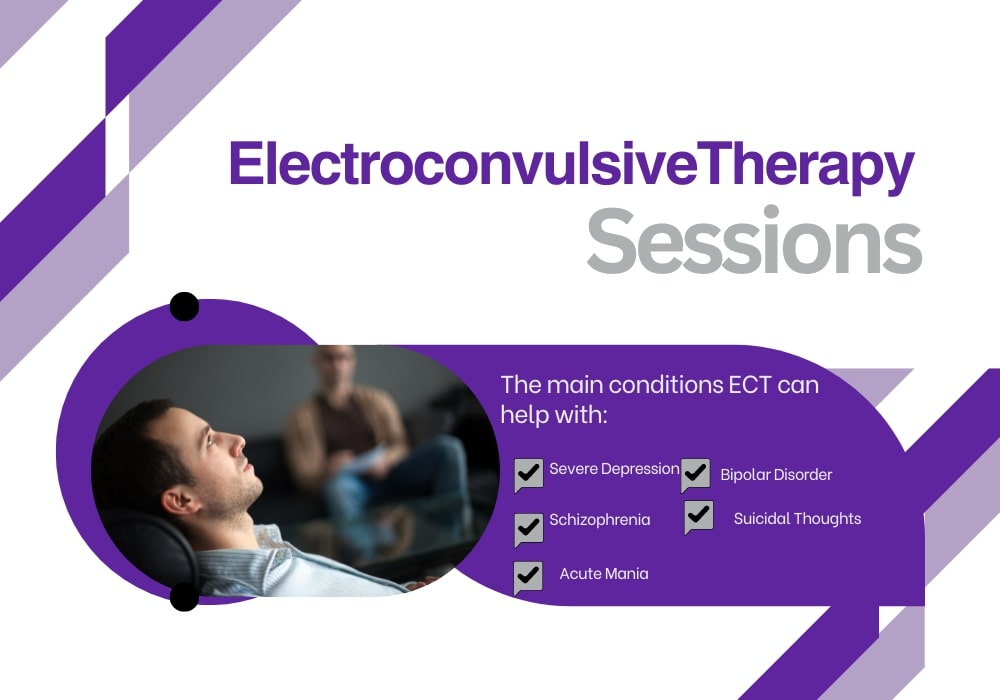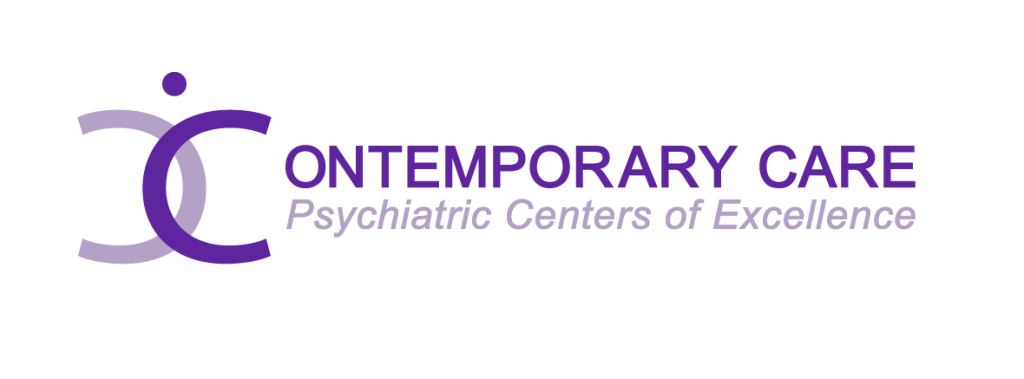Mental health is a personal journey unique to everyone. While therapy and medications work well for many, sometimes more is needed. That’s where electroconvulsive therapy (ECT) comes in. Unfortunately, ECT is often misunderstood and surrounded by outdated myths. In this blog, we’ll break down ECT and explore its uses, helping you understand how it fits into today’s mental health care.
What Is Electroconvulsive Therapy (ECT)?
Electroconvulsive therapy, or ECT, is a medical procedure where small electric currents are passed through the brain. Don’t worry—it’s done under anesthesia, so you’re completely comfortable and unaware during the process. These controlled currents cause a brief seizure, which can help reset brain activity and improve symptoms of certain mental health conditions.
While it might sound intense, ECT is safe when performed by trained professionals. It’s often recommended for severe cases where other treatments haven’t worked.
What Is Electroconvulsive Therapy Used For?
When medications or talk therapy just aren’t enough, knowing what electroconvulsive therapy is used for becomes crucial. Let’s look at the main conditions ECT can help with:
- Severe Depression: If someone’s depression is profound and unrelenting and hasn’t improved with medication, ECT can offer quick and effective relief.
- Bipolar Disorder: ECT helps manage extreme mood swings in people with bipolar disorder, especially during intense depressive or manic episodes.
- Schizophrenia: For those dealing with schizophrenia, ECT can help ease symptoms like catatonia or persistent delusions.
- Acute Mania: When mania spirals out of control, ECT can be a fast and effective way to regain balance.
- Suicidal Thoughts: When someone is overwhelmed by suicidal thoughts and is at serious risk, ECT can be a lifesaver.
How Does Electroconvulsive Therapy Work?
To understand what electroconvulsive therapy is used for, it’s helpful to know how it works. Here’s a step-by-step overview:
- Preparation: Before the procedure, you’re given anesthesia and muscle relaxants. This means you’re asleep and feel nothing, and your body stays calm during the treatment.
- Electrode Placement: Electrodes are gently placed on your head. Depending on the type of ECT, they’re positioned on either one or both sides of your head.
- Electric Stimulation: A small electric current is passed through your brain for a few seconds, causing a brief seizure.
- Recovery: After the procedure, you wake up gradually, and most people feel fully alert within minutes.
Clearing Up Myths About Electroconvulsive Therapy
Outdated movies and stereotypes primarily fuel plenty of misconceptions about ECT. Let’s set the record straight:
- Myth: ECT is painful and traumatic.
- Reality: You don’t feel anything during ECT because you’re under anesthesia. Any side effects, like temporary confusion or memory issues, usually disappear quickly.
- Myth: ECT is an outdated, last-resort treatment.
- Reality: ECT is a well-researched, effective treatment, often the best option for people who haven’t found relief through other methods.
- Myth: ECT causes brain damage.
- Reality: Modern ECT is safe and doesn’t lead to permanent brain damage. While some temporary memory issues can happen, they usually improve over time.
Who Should Consider Electroconvulsive Therapy?
Understanding what electroconvulsive therapy is used for also involves knowing who might benefit from it. ECT is usually considered when:
- Other treatments haven’t worked.
- Symptoms are severe and need immediate help, like ongoing suicidal thoughts.
- The condition makes it difficult to function in daily life.
Different Types Of Electroconvulsive Therapy
There are a few ways ECT can be done, depending on how the electrodes are placed:
- Unilateral ECT: Electrodes are placed on one side of your head. This approach usually has fewer side effects, like memory issues.
- Bilateral ECT: Electrodes are placed on both sides of your head. While this can be more effective for some people, it’s more likely to cause temporary cognitive side effects.
- Brief-Pulse and Ultrabrief ECT: These terms refer to the speed of the electric pulse. Ultrabrief ECT is often used to minimize side effects like memory loss.
Benefits And Risks Of Electroconvulsive Therapy
Like any medical treatment, ECT has its pros and cons. Here’s a closer look at both:
Benefits:
- Quick Relief: ECT works fast, often relieving people in severe distress when other treatments haven’t worked.
- Lifesaving in Emergencies: For those facing an immediate mental health crisis, like severe depression with suicidal thoughts, ECT can be a crucial, lifesaving option.
- High Success Rate: ECT has a success rate of about 70-90% for conditions like severe depression.
Risks:
- Memory Issues: Memory loss, especially for events around the time of treatment, is the most common side effect.
- Confusion: Some people feel disoriented right after waking up, but this usually clears up quickly.
- Physical Side Effects: As with any anesthesia procedure, side effects can include headaches or nausea.
What To Expect After Electroconvulsive Therapy
After completing ECT sessions, ongoing care is just as critical. This often includes medications or therapy to maintain progress. Regular check-ins help monitor your health and manage any lingering side effects.
ECT In Today’s Mental Health Care
With better knowledge and technology, the way we view what electroconvulsive therapy is used for has changed. ECT is no longer seen as a last-ditch option. Instead, it’s recognized as an essential tool for managing harsh mental health conditions. For some people, it can be the breakthrough they’ve been searching for.
Is ECT The Right Choice For You?
Deciding if ECT is right for you is a decision that should be made with your healthcare provider. They’ll look at your medical history, current symptoms, and other factors to help guide you. ECT isn’t for everyone, but the results can be life-changing for those who need it.
Electroconvulsive therapy has come a long way. Today, it stands as one of the most effective treatments for severe mental health conditions when other methods haven’t worked. While there are risks, the potential benefits are significant for struggling people. If you or someone you care about is facing severe mental health challenges and nothing else has worked, ECT might be worth considering.
Frequently Asked Questions
What Is Electroconvulsive Therapy?
ECT is a medical procedure that uses small electric currents to trigger a brief seizure in the brain, helping improve symptoms of severe mental health conditions.
What Is Electroconvulsive Therapy Used For?
ECT is mainly used for treating severe depression, bipolar disorder, schizophrenia, extreme mania, and suicidal thoughts when other treatments haven’t been successful.
Does ECT Hurt?
No, you’re under general anesthesia during the procedure so that you won’t feel anything.
How Effective Is Electroconvulsive Therapy?
ECT is highly effective, with 70-90% of patients experiencing significant improvement, particularly in cases of treatment-resistant depression.
Are There Long-Term Side Effects Of ECT?
Most side effects, like temporary memory loss or confusion, usually disappear over time. Long-term complications are rare.

Looking For A Way Out? Take The Next Step Towards Better Mental Health With Contemporary Care Centers
If you’ve been battling severe depression or other mental health challenges and nothing seems to work, it’s natural to feel frustrated and hopeless. But there’s still a path forward. At Contemporary Care Centers, we’re here to help with electroconvulsive therapy (ECT), a treatment that’s been a game-changer for many people when other methods haven’t brought the relief they need.
We know ECT might sound intimidating, but our friendly and supportive team will be with you every step of the way. We focus on making you feel comfortable, heard, and cared for while exploring a treatment that has brought tangible results for many others. This could be the breakthrough you’ve been searching for—the chance to finally experience relief and reclaim the quality of life you deserve.
You don’t have to go through this alone. Contact us today to see if ECT is the right step for you. Let’s work together to give you the support, comfort, and care you need to start feeling like yourself again. Visit Contemporary Care Centers to book a consultation and take that first step toward a better tomorrow.



